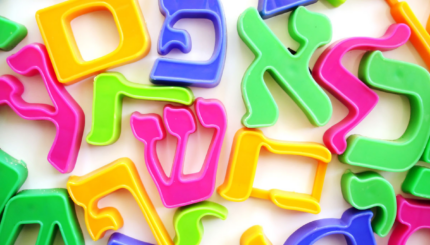Most languages are, like English, written from left to right. Hebrew, like some other languages from the Middle East (most notably Arabic) is written in the opposite direction.
No one knows for sure why this is, but scholars theorize that it has to do with the medium in which the language was originally written. Left to right languages are convenient for right-handed people writing in ink. By writing from left to right, the scribe avoids smearing what they’ve written.
Find out why Hebrew is of central importance in Judaism.
By contrast, scholars believe Hebrew was initially inscribed in stone. For a right-handed person chiseling a tablet, it is most convenient to hold an awl in the left hand and strike it with a mallet held in the right, naturally progressing from right to left across a stone surface. The large blocky letters are also conducive to being rendered in simple, straight marks. By the time parchment and papyrus became the preferred media for writing, Hebrew script was already fixed.

Help us keep Jewish knowledge accessible to millions of people around the world.
Your donation to My Jewish Learning fuels endless journeys of Jewish discovery. With your help, My Jewish Learning can continue to provide nonstop opportunities for learning, connection and growth.
Writing from right to left makes writing Hebrew by hand a little more awkward than some other languages. As any right-handed sofer (Torah scribe) will likely tell you, inking Hebrew scrolls can be a messy business. Nevertheless, since ancient times Hebrew scribes have developed many beautiful versions of it for sacred Jewish texts, like the sefer Torah and mezuzah scroll. Because these traditional styles are not conducive to writing quickly by hand, Hebrew also has a script just for handwriting.
Incidentally, the contemporary Hebrew letters — which have remained largely unchanged over the last 2,000 years — are not the original script of the language. An older Hebrew script called paleo-Hebrew was used up until the Babylonian exile in the 6th century BCE (and in some contexts afterward). That script was also written from right to left.
Want to learn Hebrew one day at a time? Click here to sign up for our Hebrew Word of the Day email.



